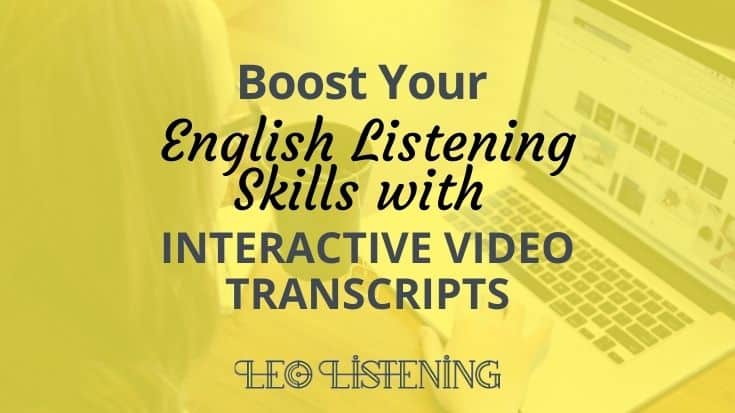
How to Boost Your Listening Skills with Interactive Video Transcripts
- You can click on any part of the transcript and then listen to that part of the video
- The words are highlighted as they are spoken
- You can use the ctrl + F function to find specific words or expressions and listen to them
Interactive Transcripts #1: YouTube
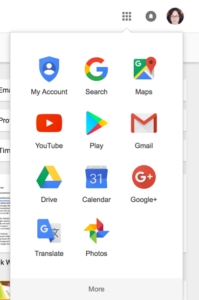
When you’re in Google Drive or Gmail or wherever else, simply click on the apps menu to go straight to another Google service such as YouTube
How To Find The Interactive Transcript On YouTube
Closed captions
Unfortunately, although they seem to be improving, the automatic YouTube captions generally contain errors. Once you’ve found a video with human-generated subtitles, click ‘more’ underneath the video and then click ‘transcript’.
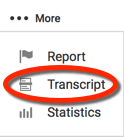
Click ‘more’ under the video, then ‘transcript’.
Now you can see the interactive transcript. The bold text indicates the words being spoken at a particular moment in the video.
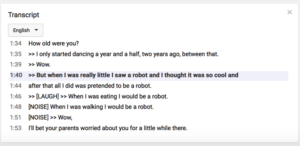
An example of an interactive transcript with accurate, human generated subtitles
The interactive transcript is not the same thing as the subtitles that appear on the video. To show the subtitles, you need to click on the ‘cc’ button on the video screen.
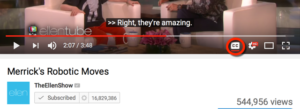
Click on the cc button on the video screen to display the subtitles
How To Improve Your Listening With The YouTube Interactive Transcript
- I always recommend listening without subtitles or a transcript first and trying to understand as much as possible.
- Afterwards, you can use the transcript or subtitles to identify what you missed and start understanding why.
- Let’s say you watch a video or a section of a video without and then with the transcript. You use the transcript to identify words and expressions you struggled to recognise in spontaneous, natural speech.
- What you can then do is press “ctrl” + F on your computer keyboard (cmd + F on a Mac) and search for other examples of the word or expression in the video.
- Listen to them again, and practice trying to say them the way they sound in fast, natural English. Why did you fail to catch them? This post will give you some ideas. You can also simply click on a line of the transcript to listen to it again.

Use the ctrl + F function to find more examples of words or expressions you didn’t catch or understand
Recommended YouTube Channels
- The Ellen Show – talk show with US comedian Ellen DeGeneres. Also, check out this post I wrote for the iTalki blog about 10 ways to improve your listening skills with talk shows.
- Talks at Google – some of these videos are talks or presentations. Others are interviews, where the English will be more fluid and spontaneous. That said, at the end of the talks, there is a Q&A (question and answer) session with the audience, where the speaker responds in a more unplanned and conversational way.
- Storycorps – inspirational, true stories told by real people in the USA
- Movieclips – licensed clips of famous movies. Not all of them have human-generated captions so be sure to check before watching.
- If you like watching movies and TV shows, check out the official YouTube channels of your favourite networks. The Game of Thrones channel has subtitled videos, as does HBO the TV network which aired the series.
Find Videos With Human-Generated Subtitles That You Want To Watch
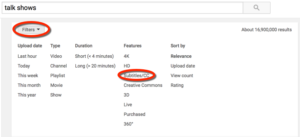
Type your search term into the bar, click filters, then select ‘subtitles/cc’
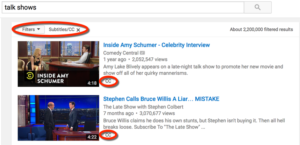
YouTube will only display videos with human-generated subtitles that are related to your search terms

Interactive Transcripts # 2: TED Talks

Planned Presentations vs Spontaneous Interviews
To practise conversational English and prepare yourself for conversations in the real world, search for an interview with a TED speaker where they are speaking spontaneously.
A really interesting exercise would be to compare the way the speaker pronounces words in a TED talk compared to an off the cuff interview. You could use the search function I mentioned above to find different examples.
I searched for some interviews at Talks at Google with the same speakers. You could compare for instance, Dan Ariley’s talk about work with his unplanned Talks at Google interview.
Compare and contrast the way Dan Ariely speaks in the two versions. What do you notice?
If you want my help with this process, check out the video below where I compare TED speaker Brené Brown’s speech during a TED Talk with how she talks in informal conversation.
3 Listening Resources For English Learners With Transcripts
Video Transcripts # 3: ELLLO

ELLLO or English Listening Lesson Library Online offers a variety of audio and video material. You can choose to show or hide the transcript as you listen.
I recommend listening without the transcript first and then using the transcript as a way to identify your difficulties.
What I love about this site is the wide variety of accents, both native and non-native to listen to, plus the English is generally conversational: natural, fluid and spontaneous rather than planned.
Video Transcripts # 4: Simple English Videos

Video Transcripts #5: British Council Learning English

Hi Cara, thanks for a great post! Lots of interesting links here. I’m particularly happy you mentioned StoryCorps. I stumbled upon this website a couple of months ago, but I forgot to bookmark it and feared I’d never find it again. It’s a great resource of genuinely interesting stories and exactly the type of content I’m interested in.
You’re welcome. Glad you found it useful and that you found Storycorps again – such a high quality resource. It’s funny with content on the web – I see useful information all the time, but sometimes it’s not exactly what I need at that moment in time or I don’t have time to take a proper look at it. That said, some resources, blog, bits of content have found their way back to me- maybe it was meant to be!